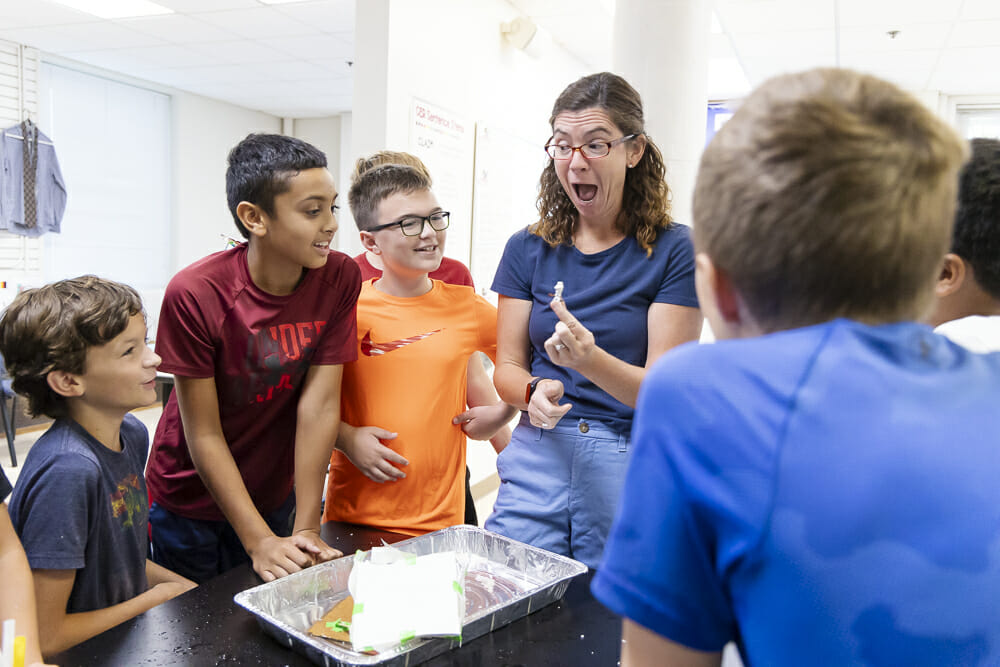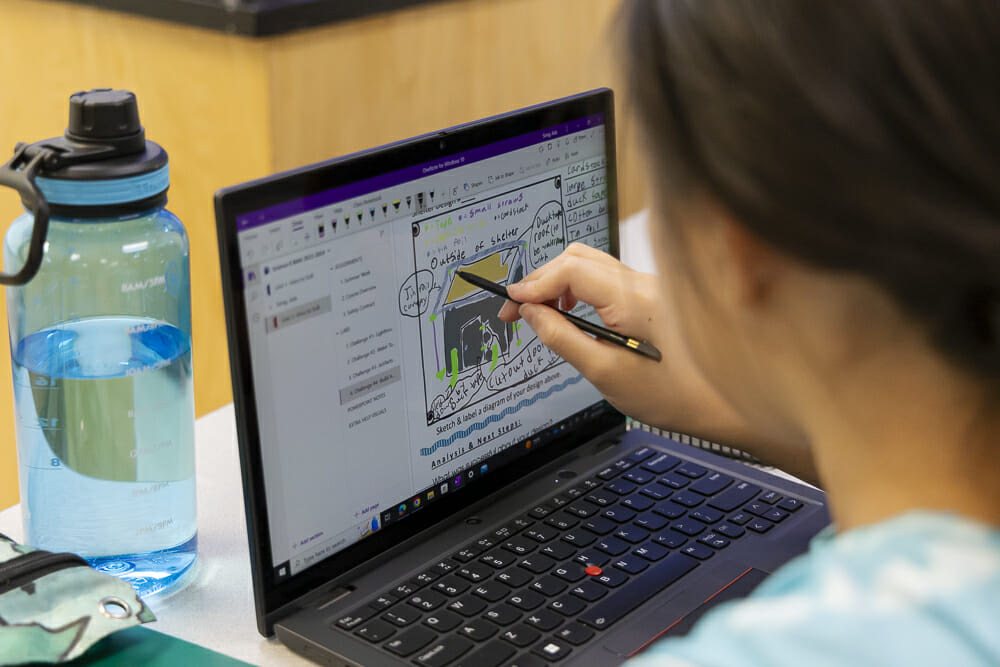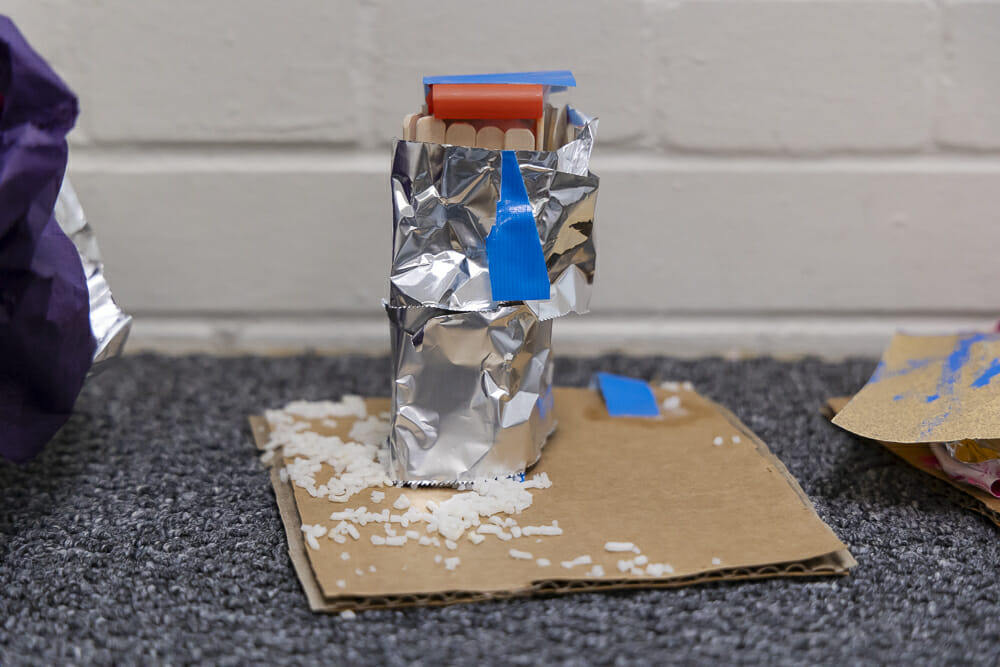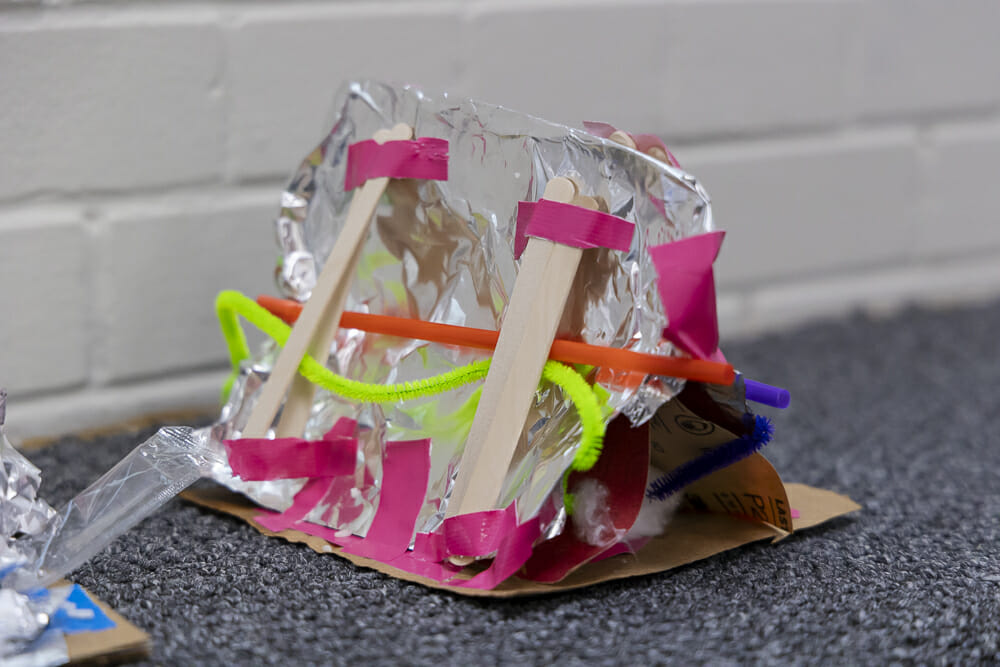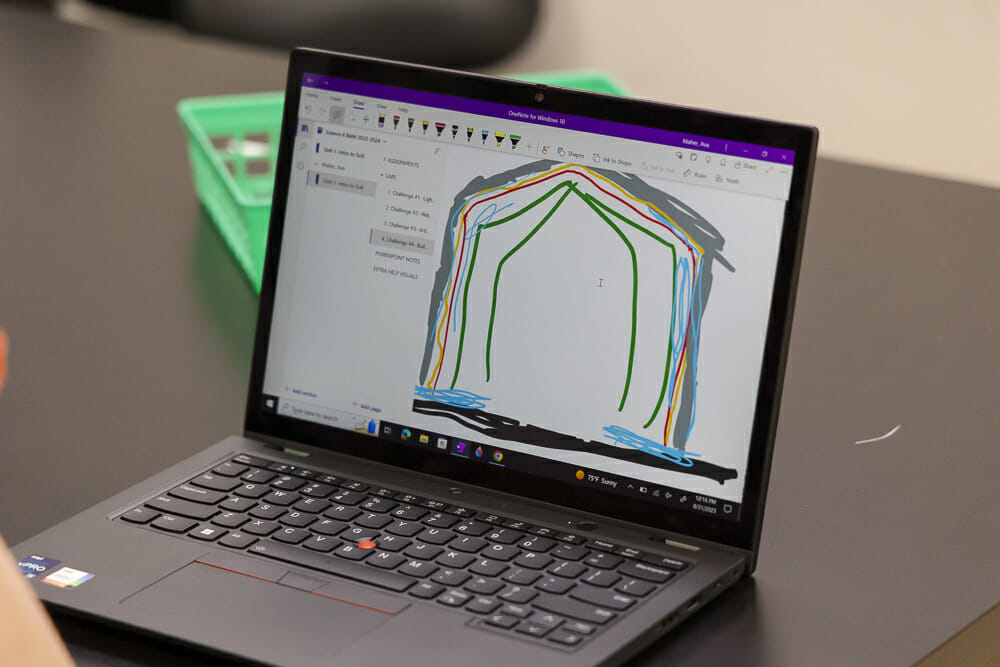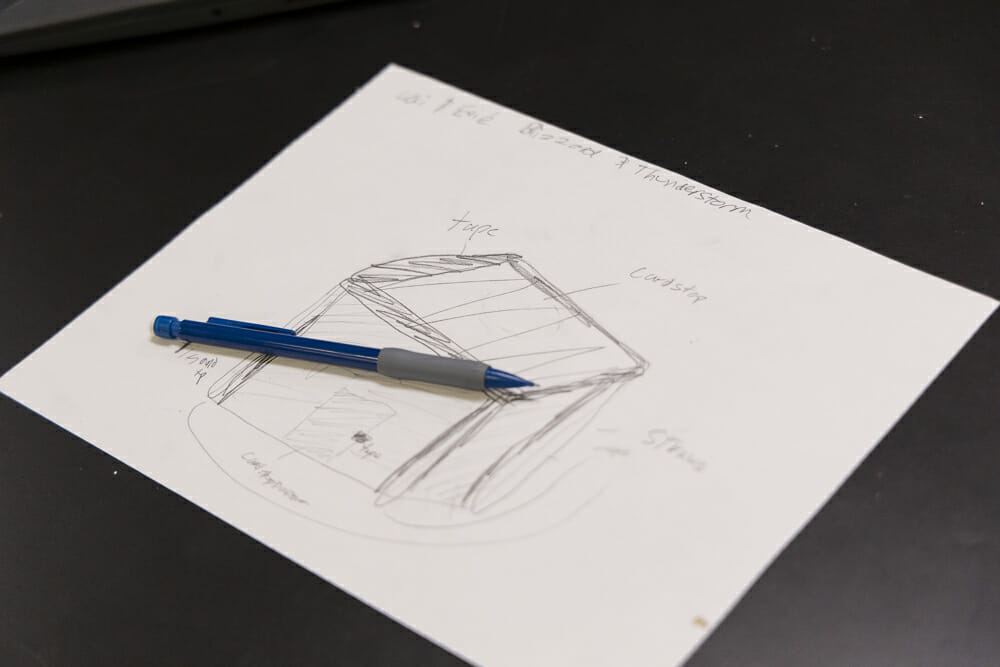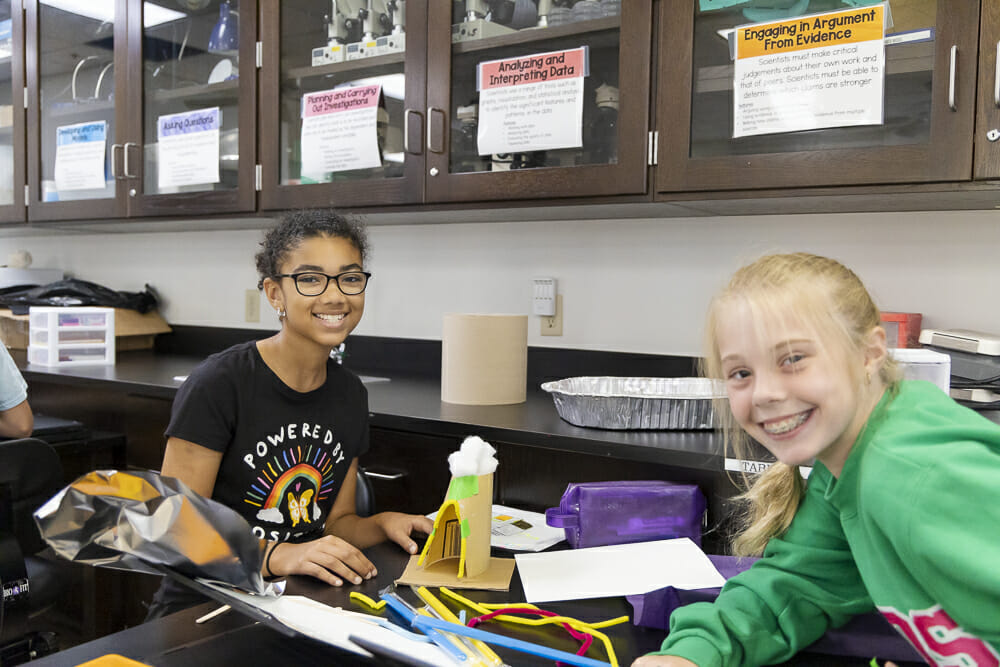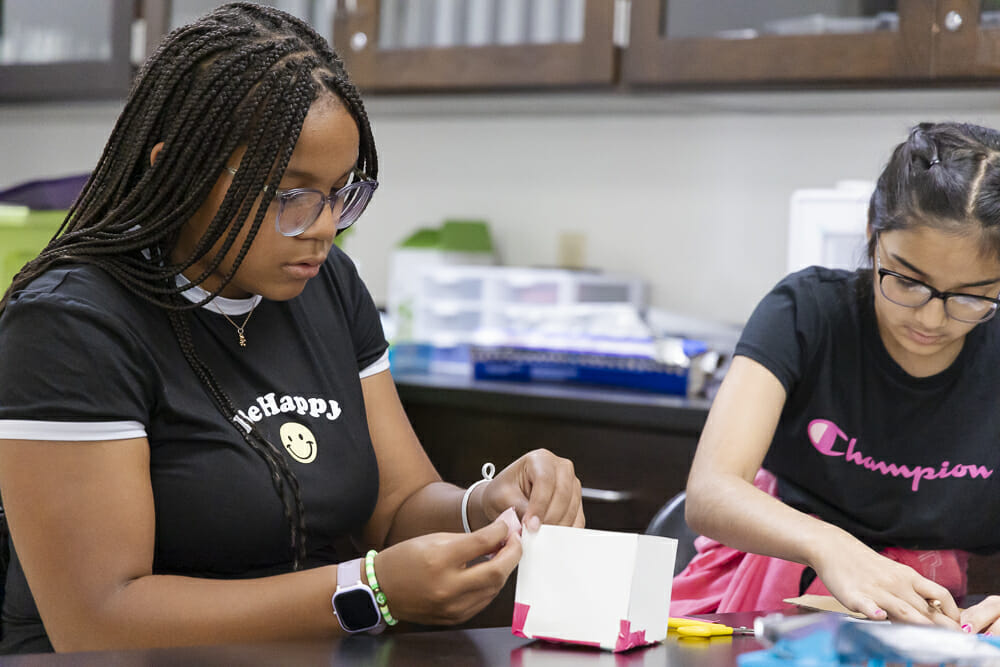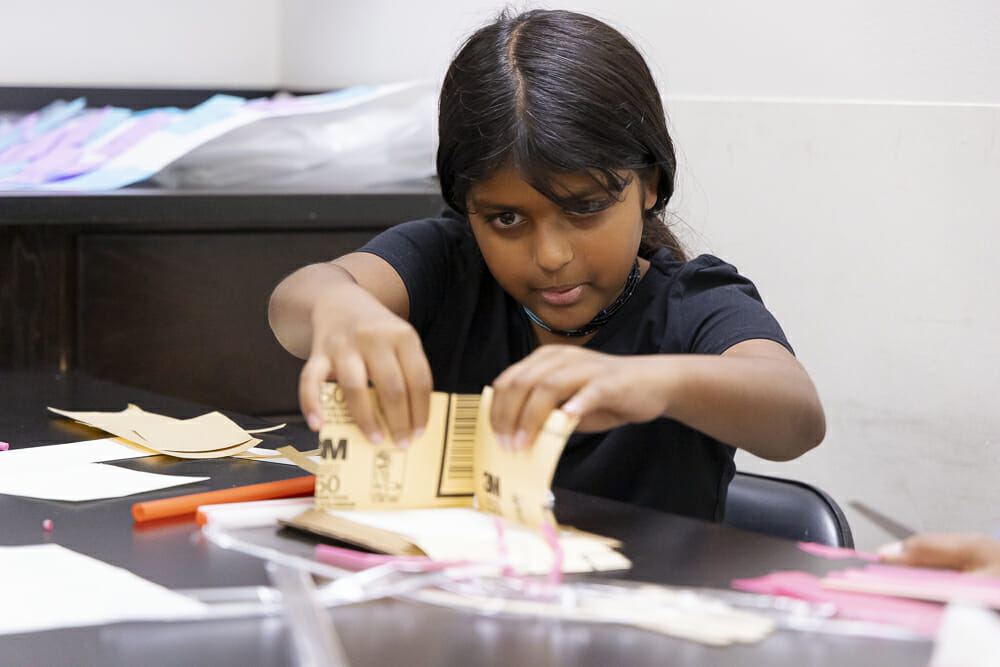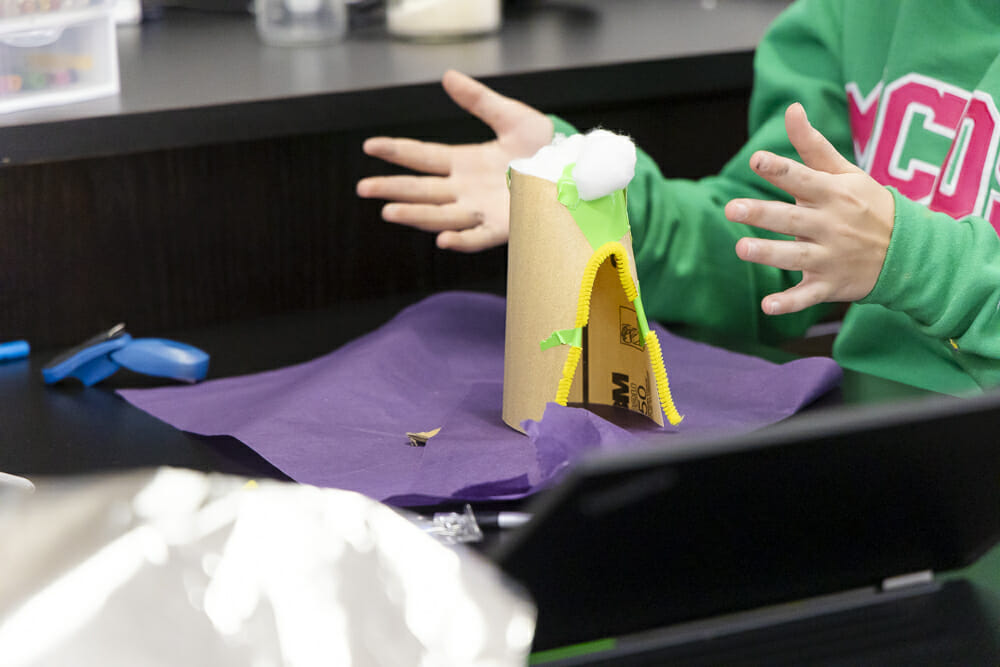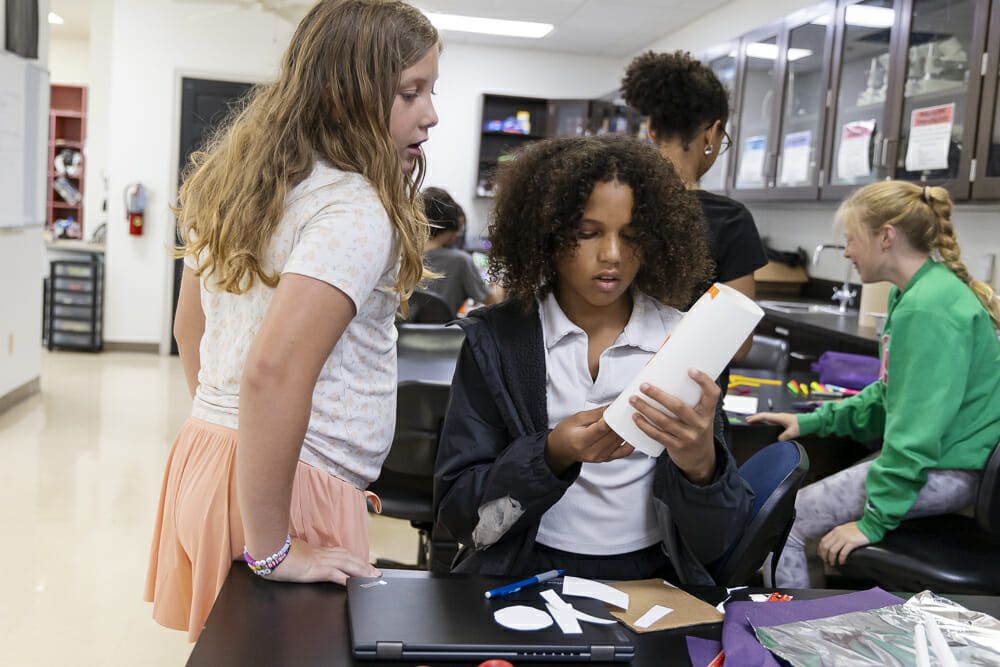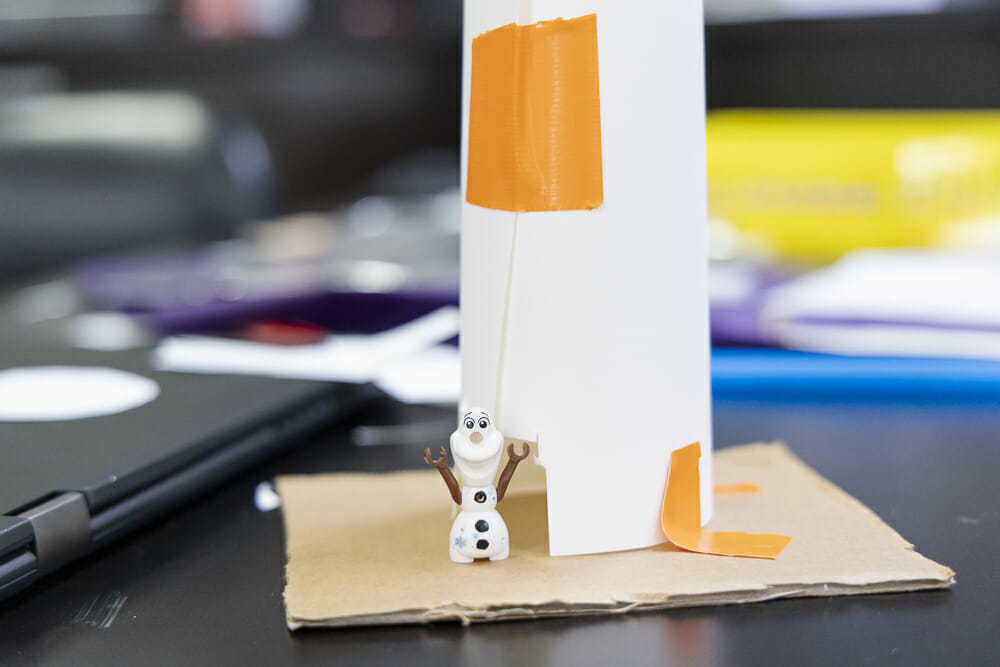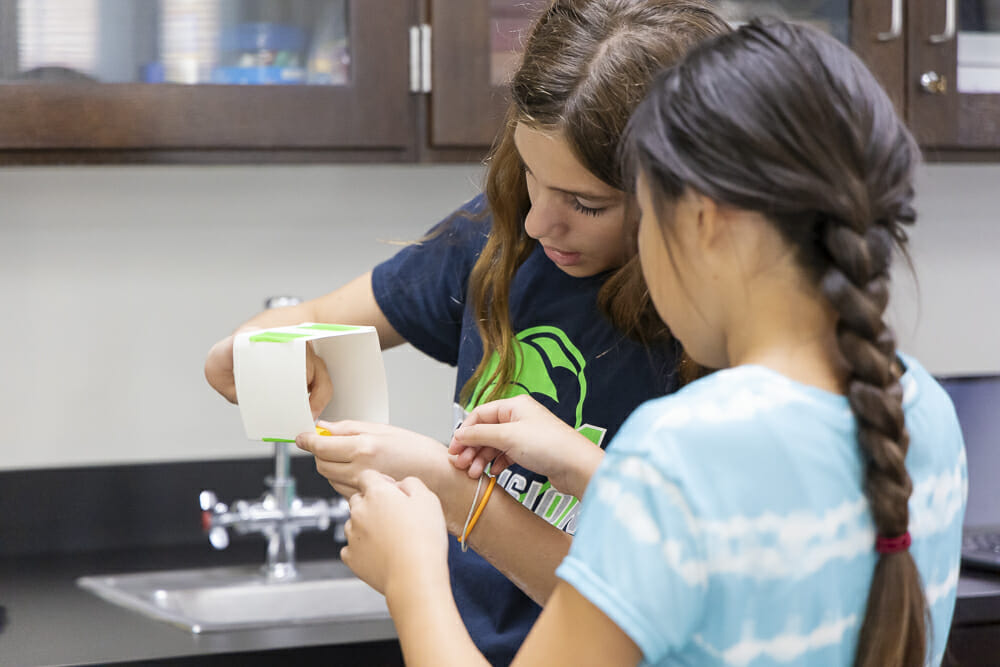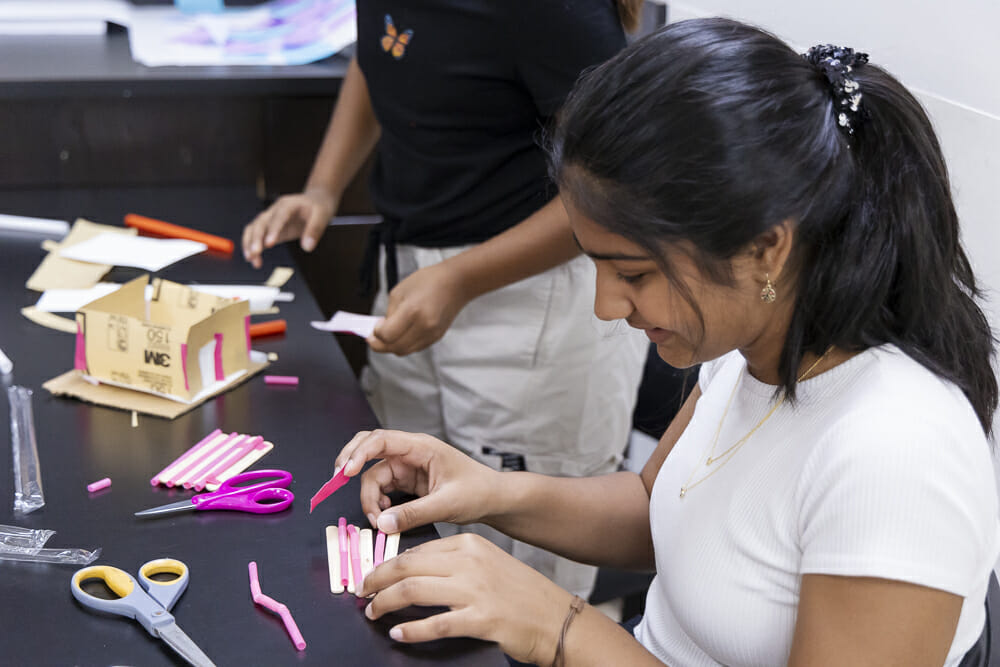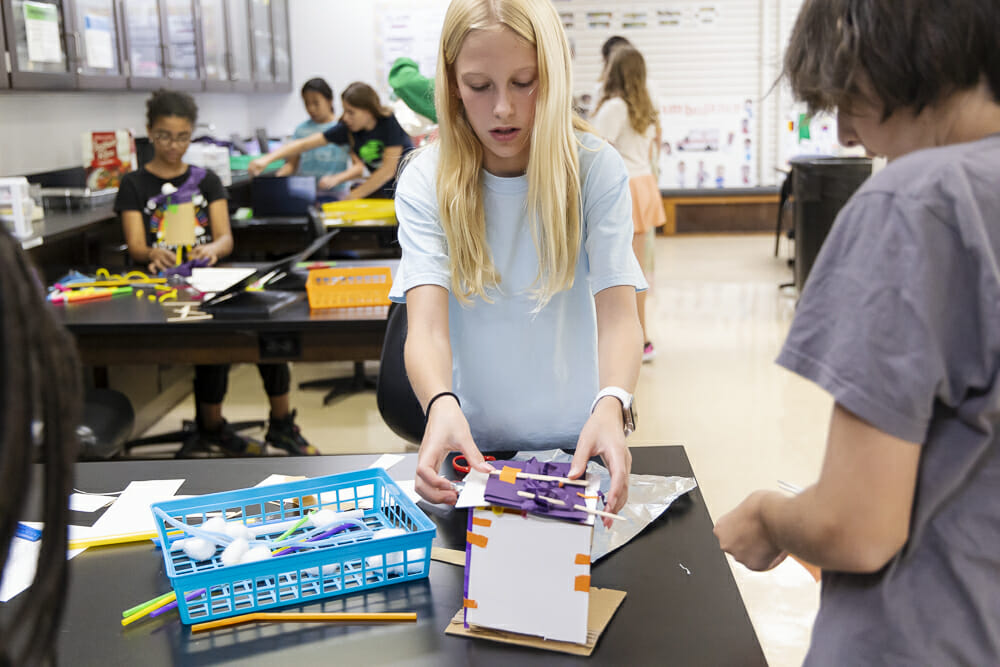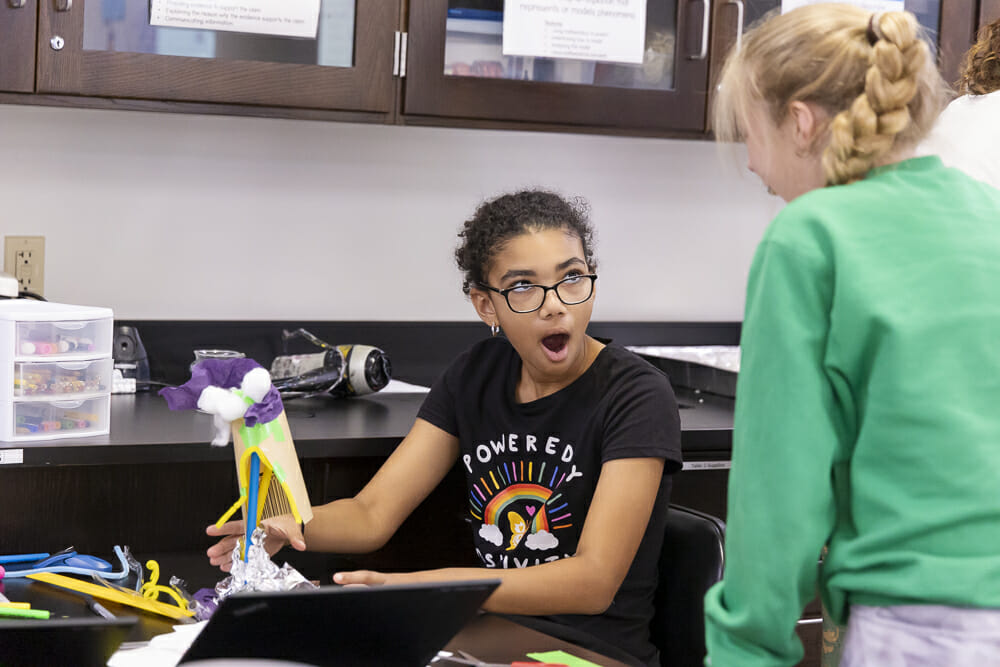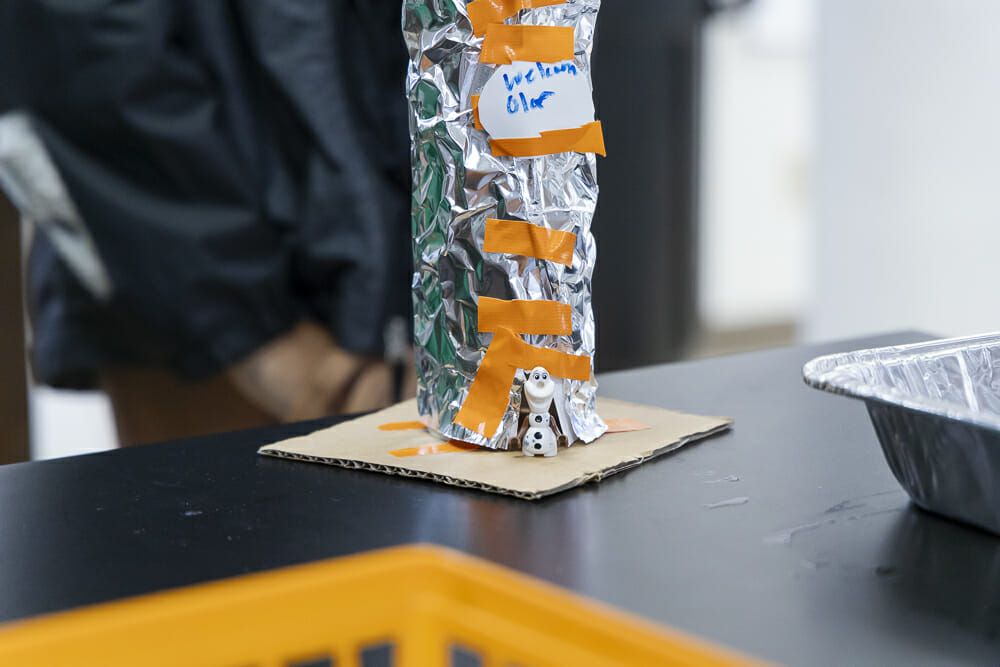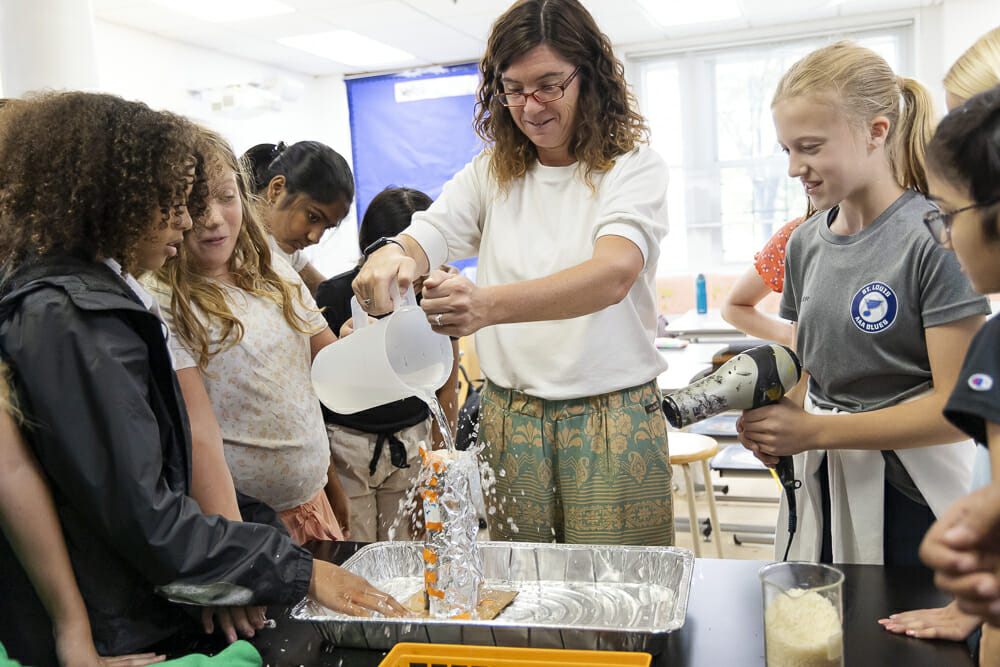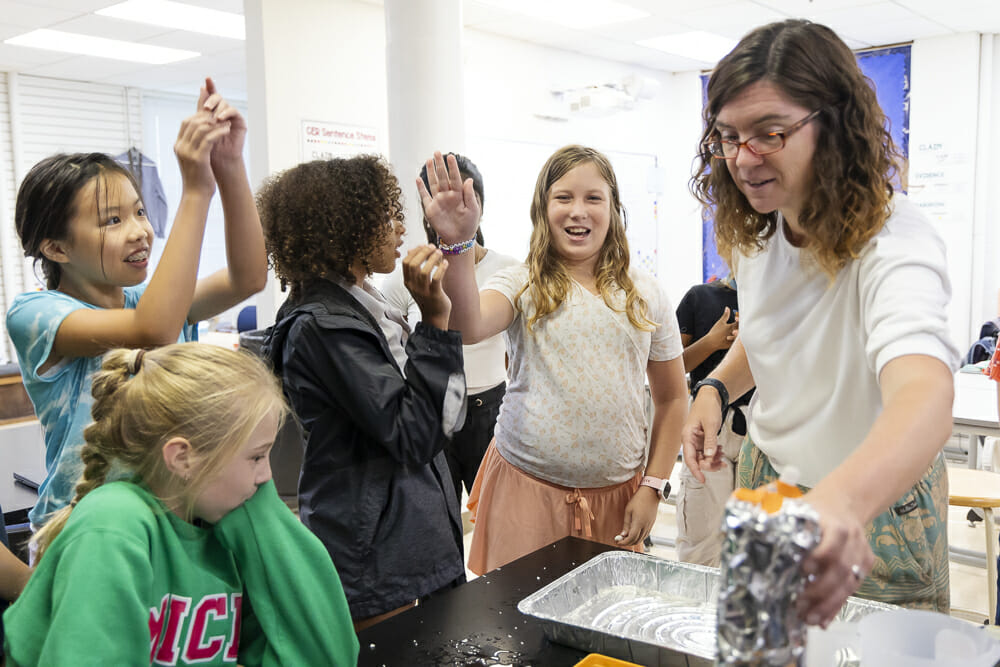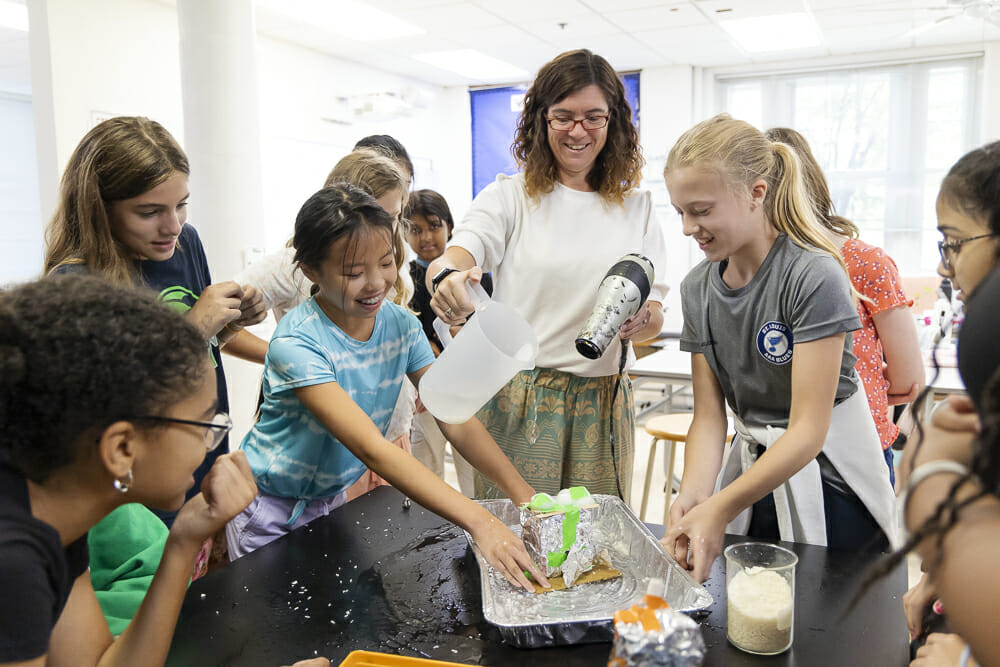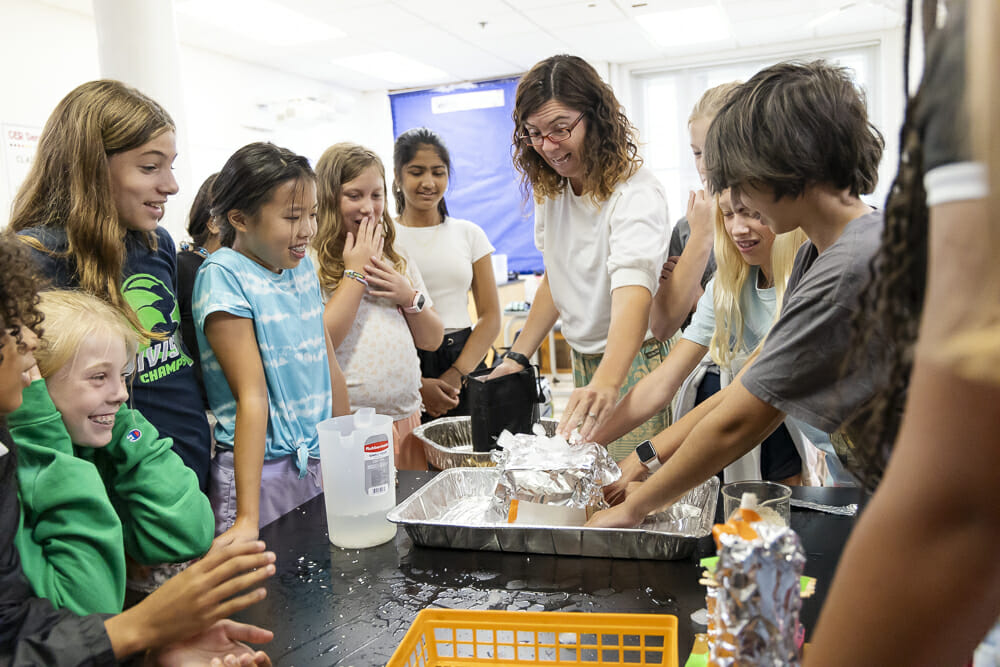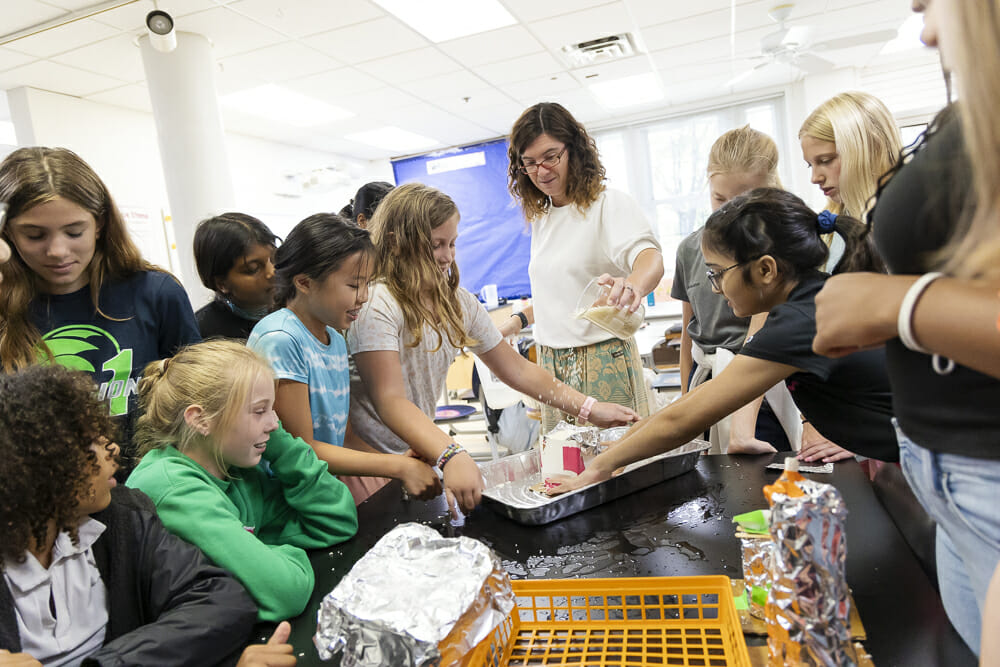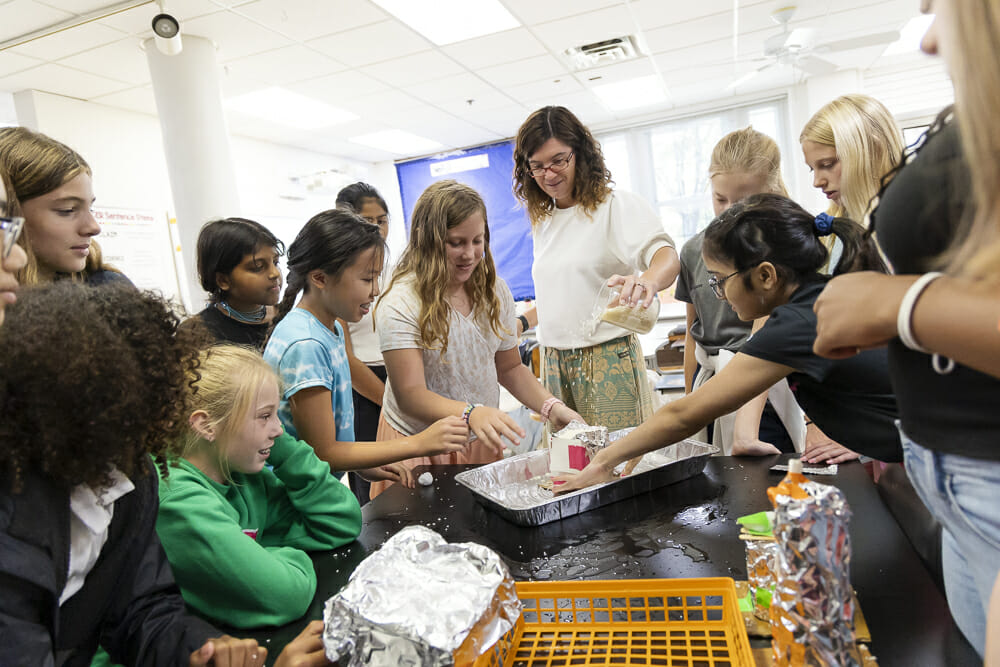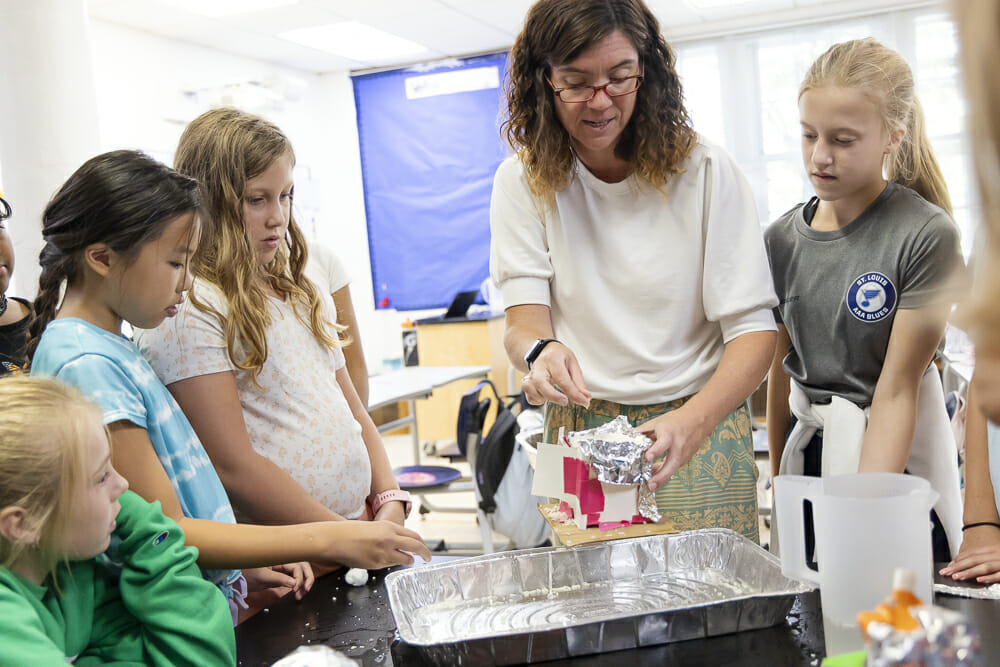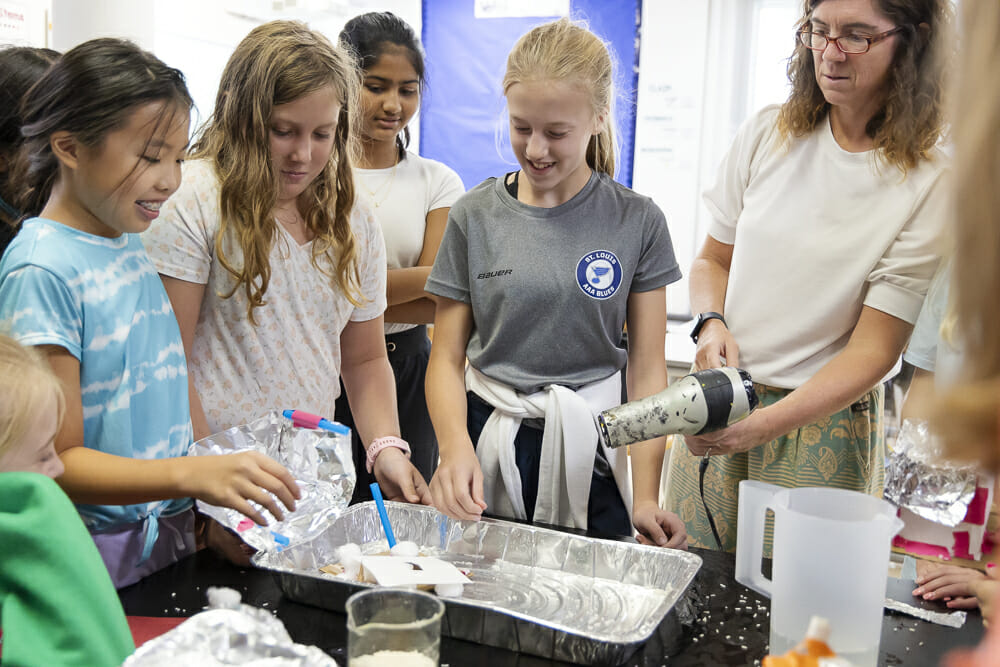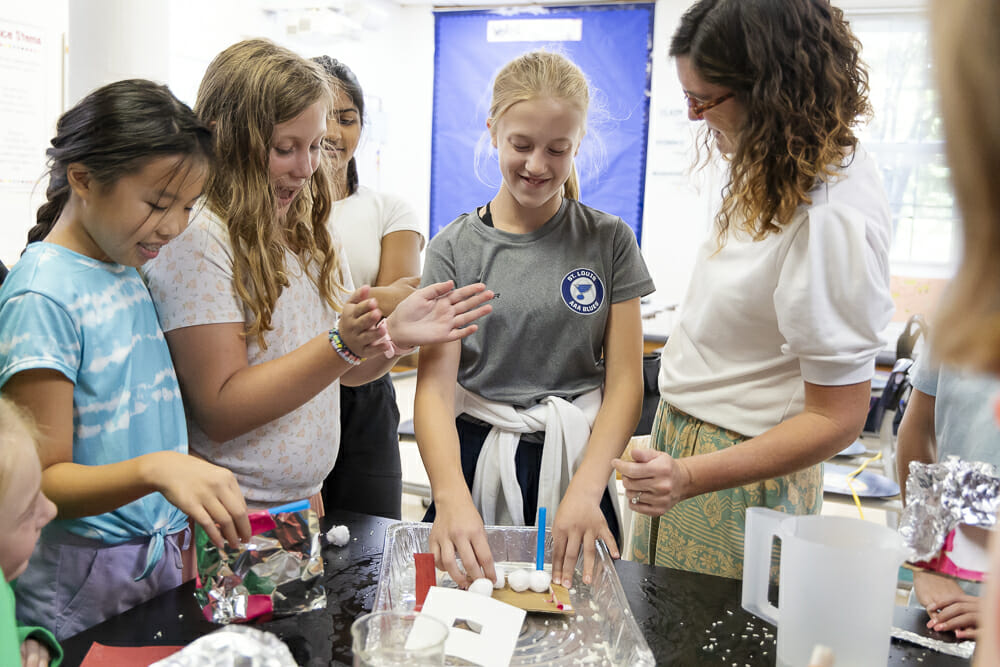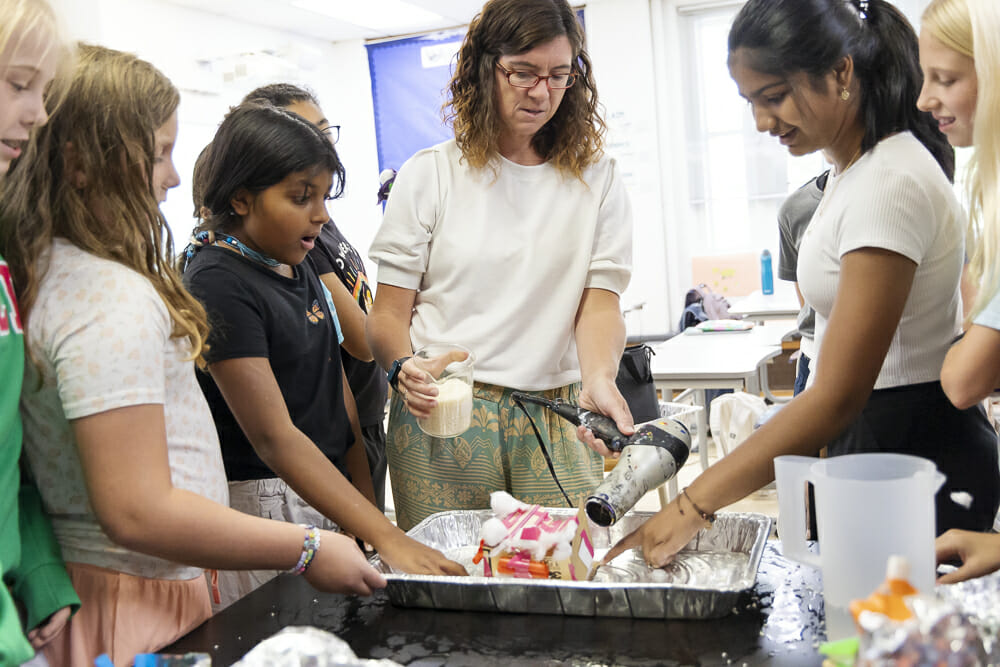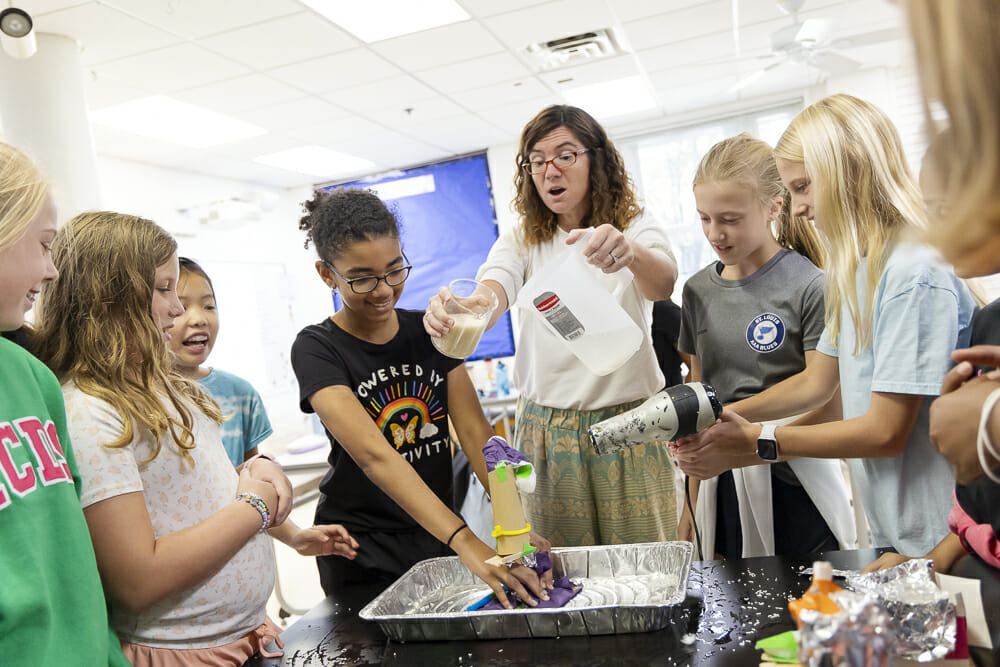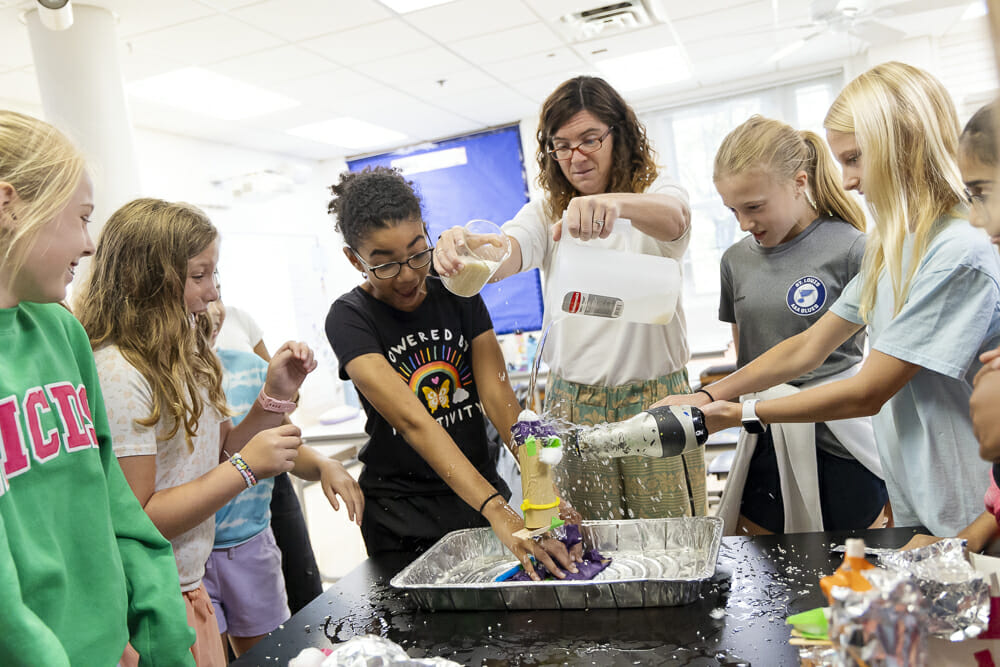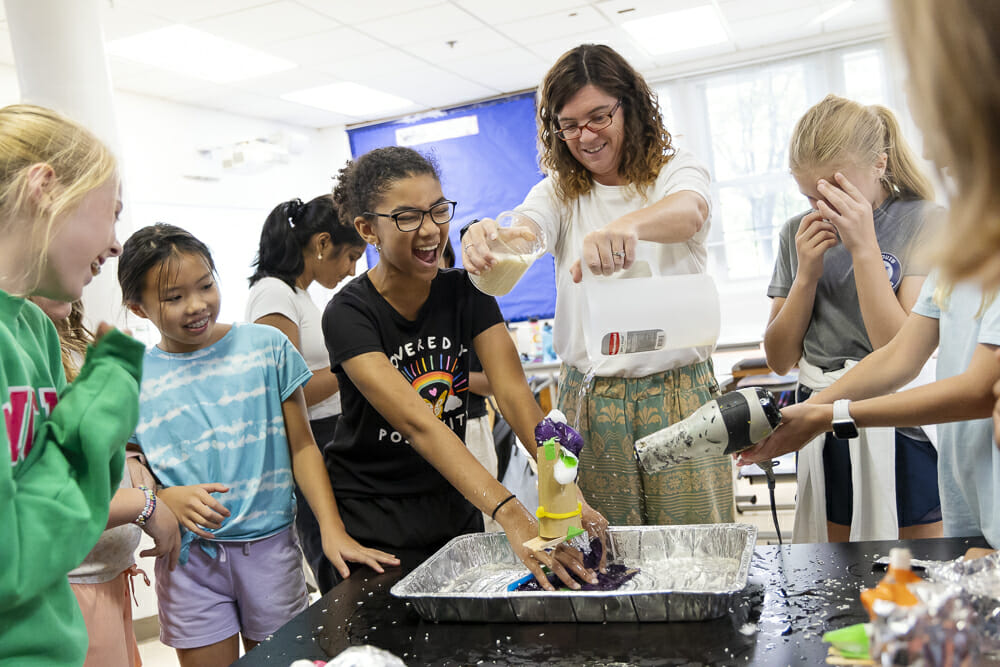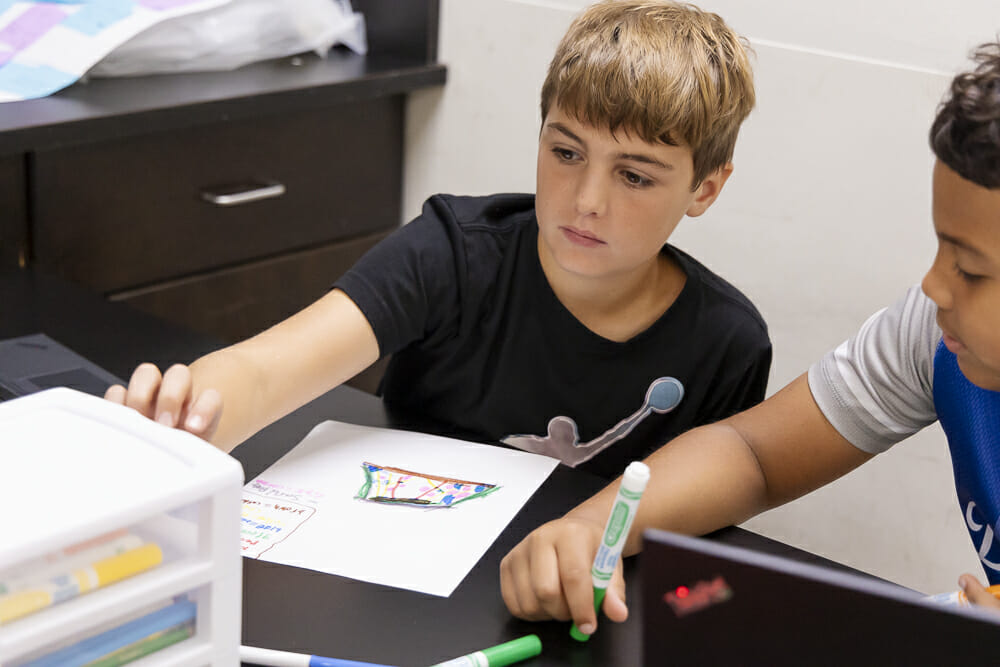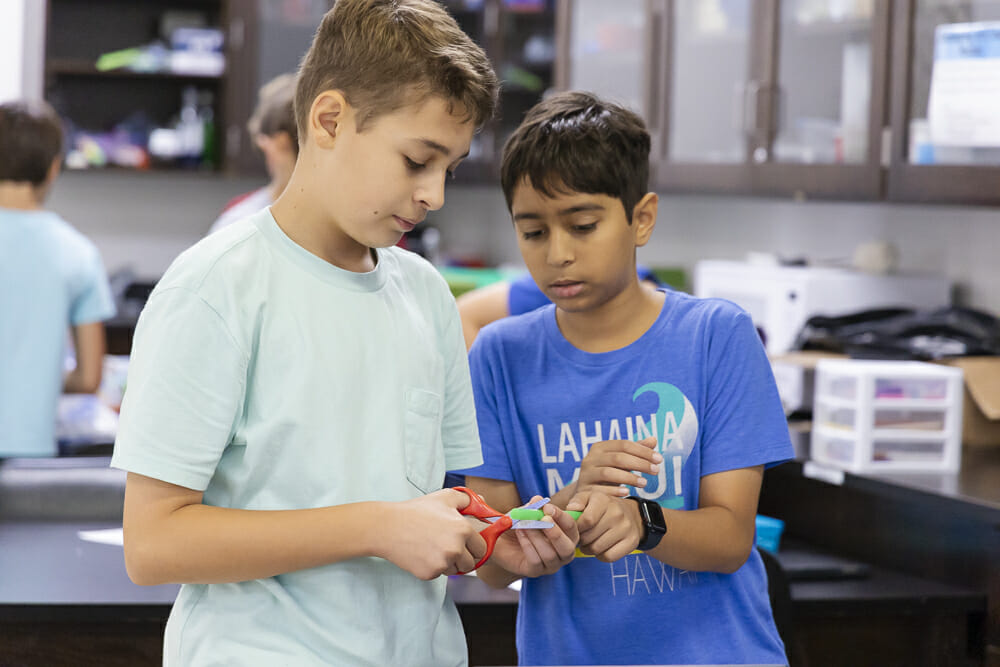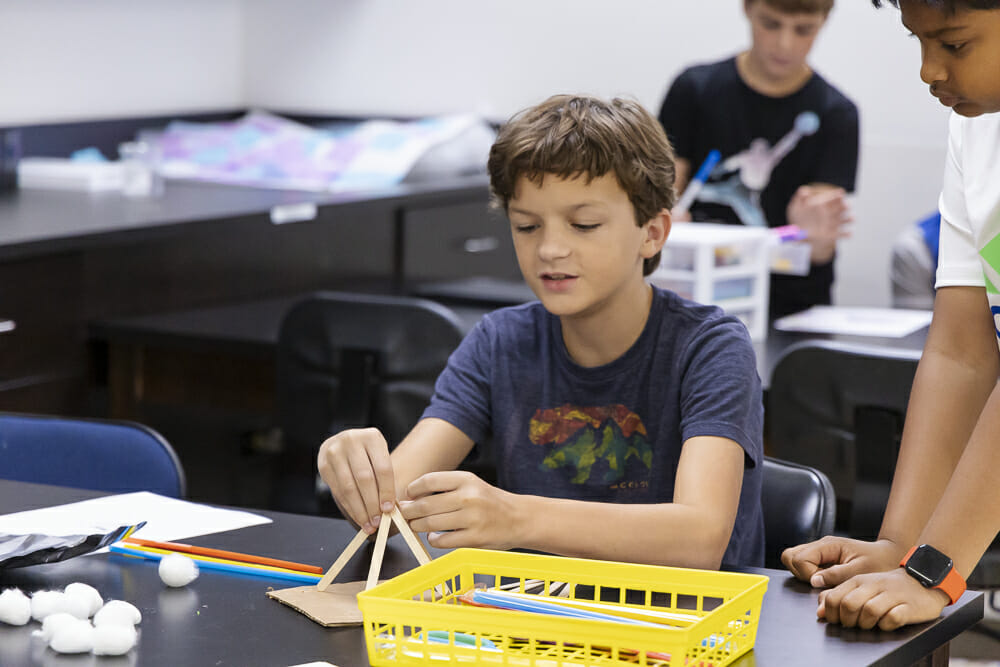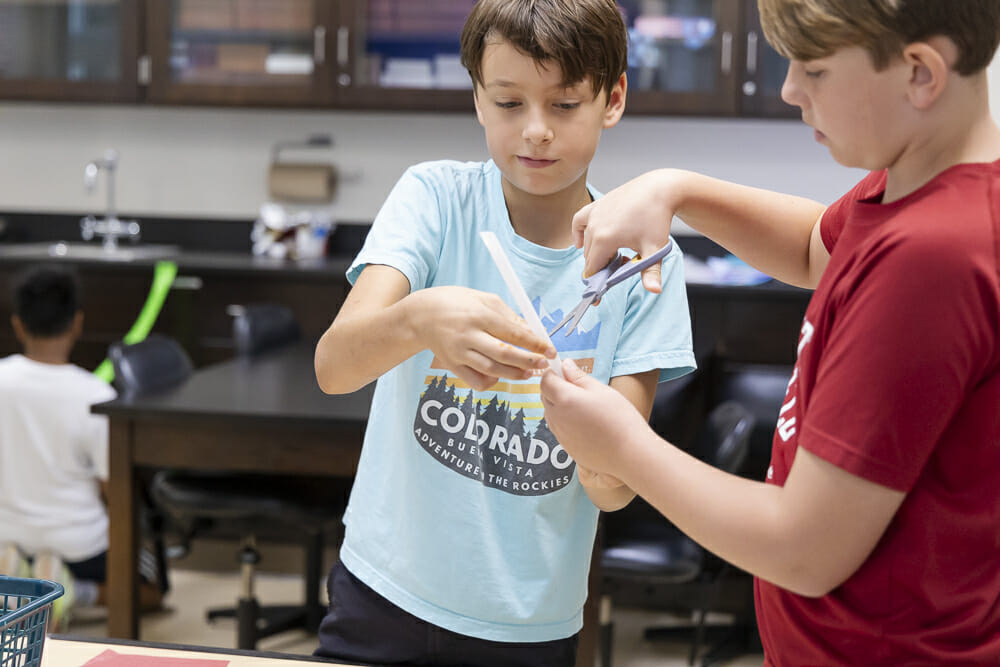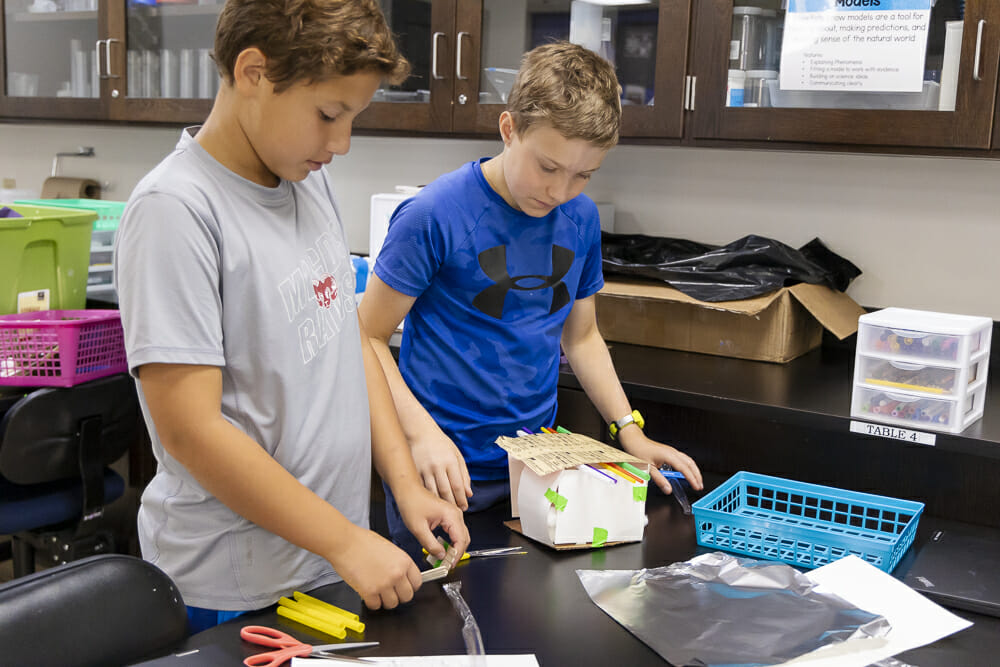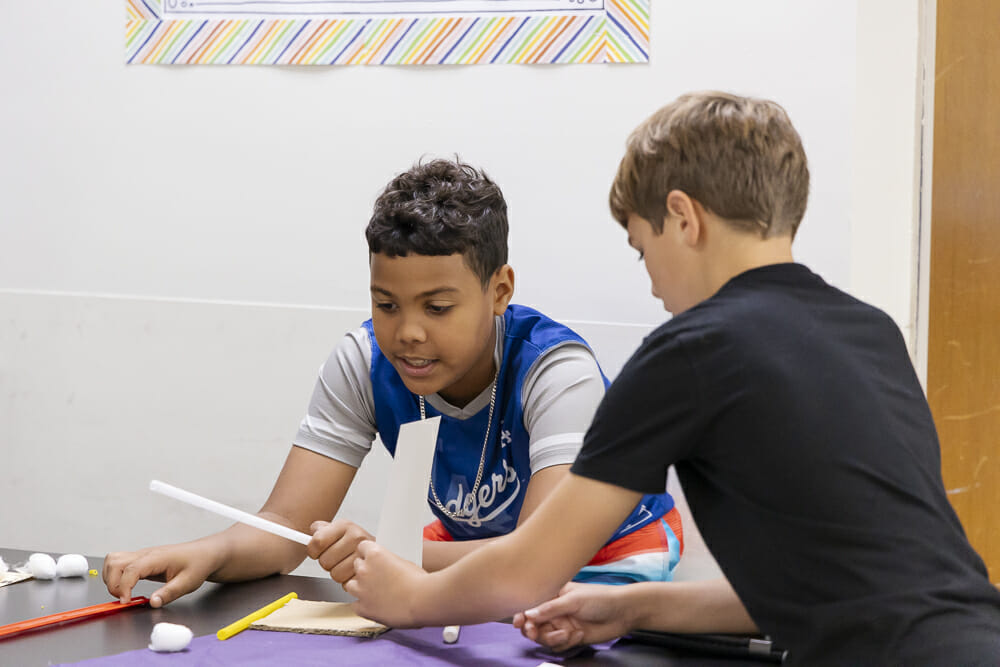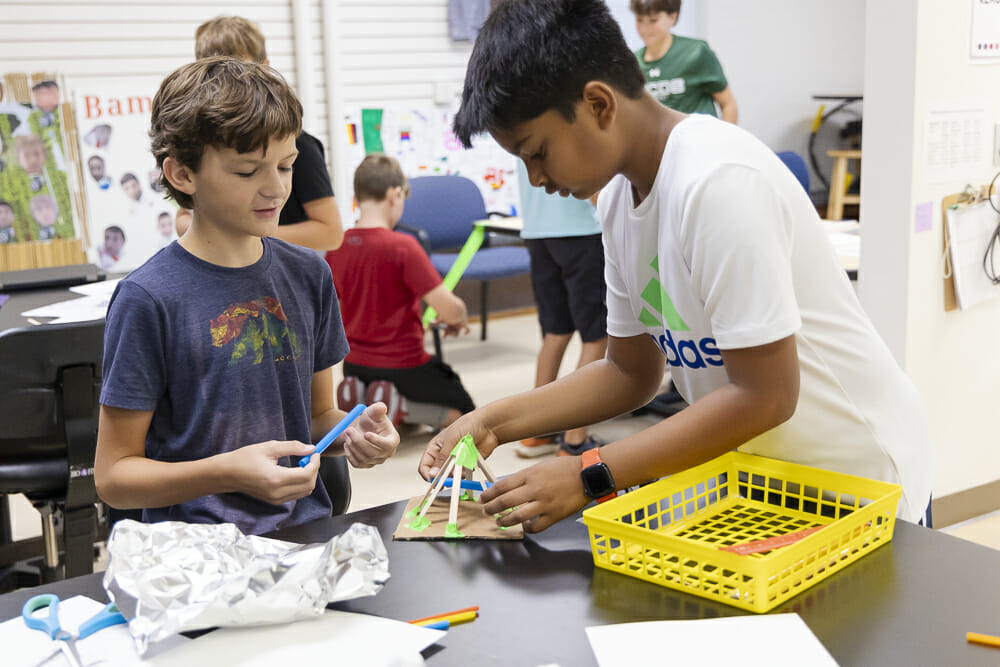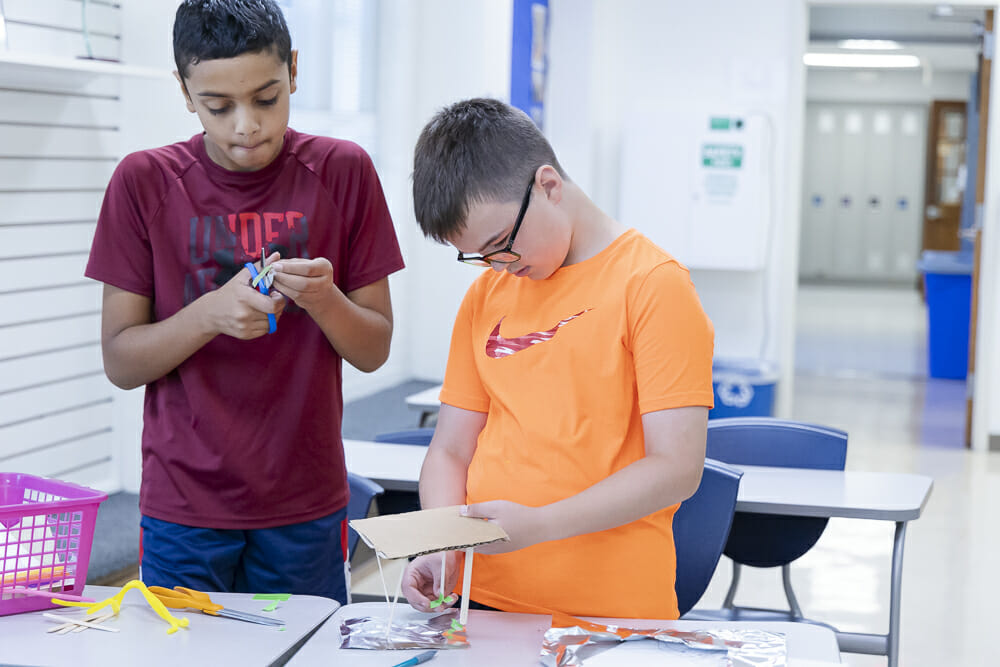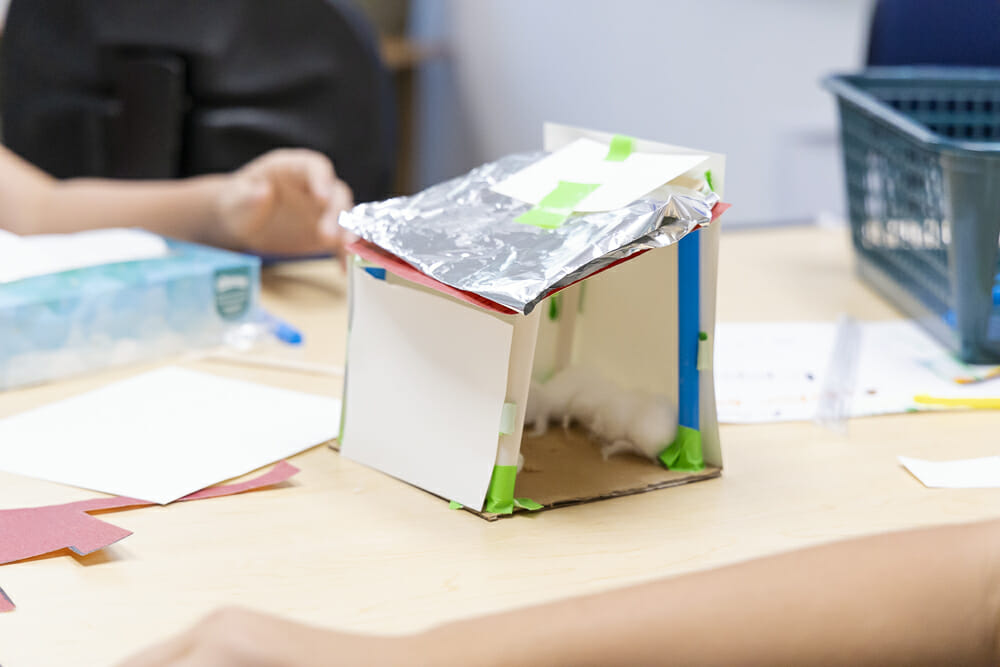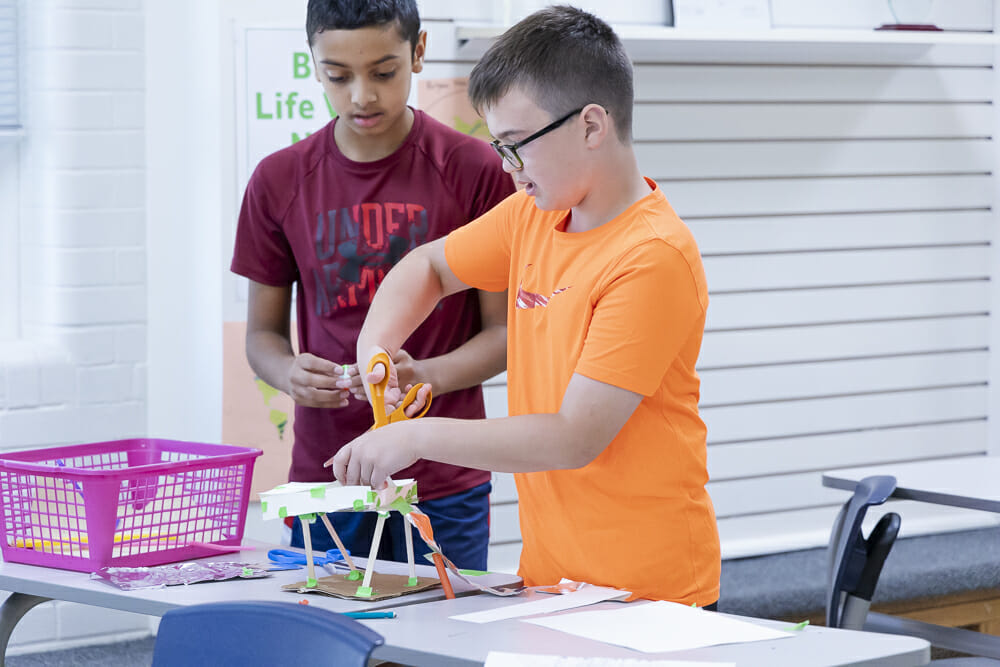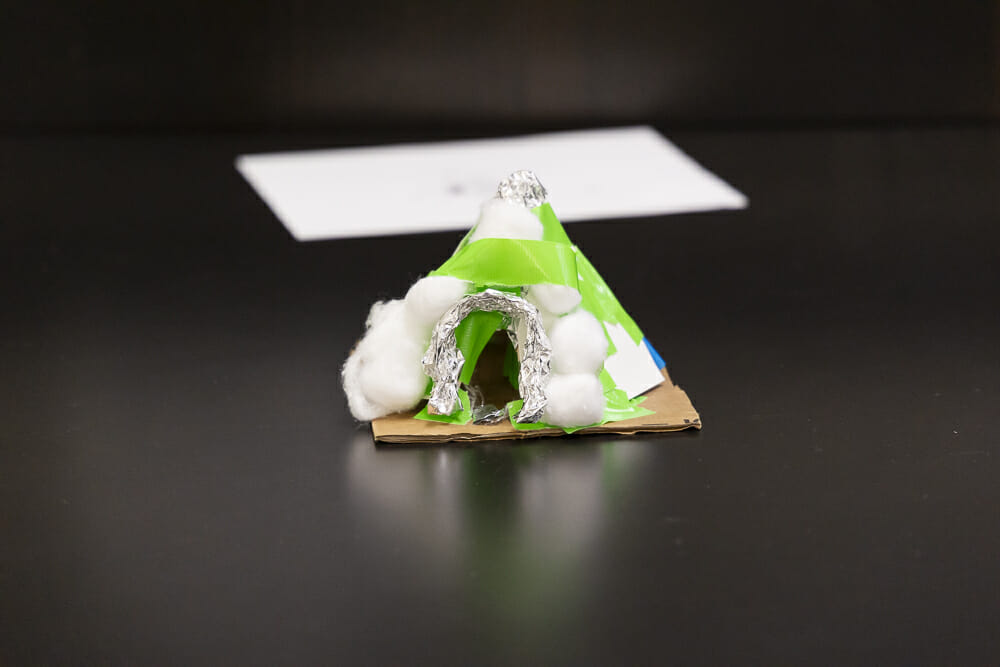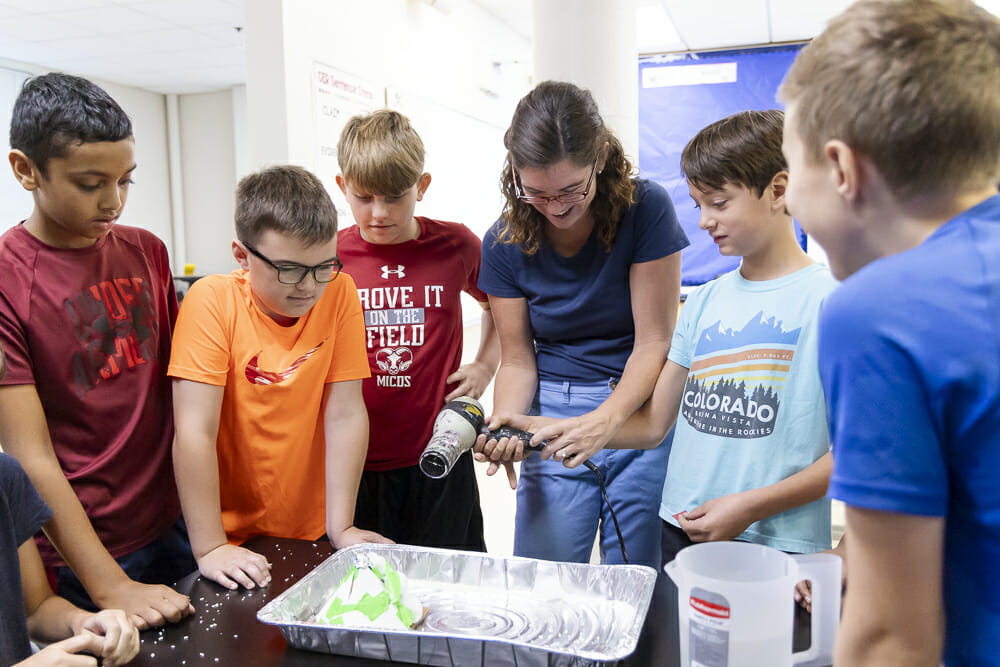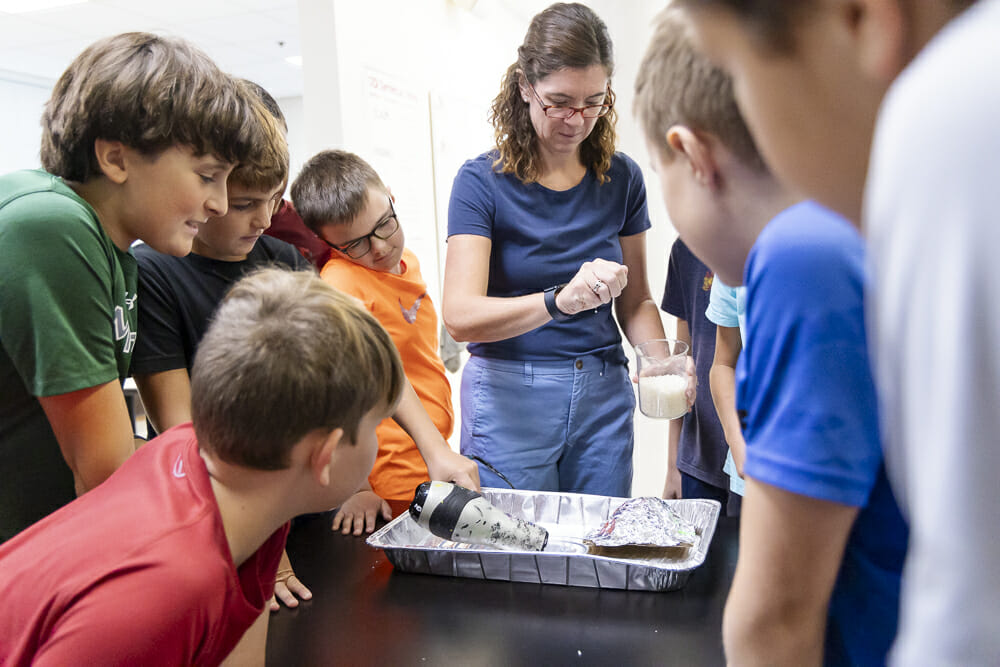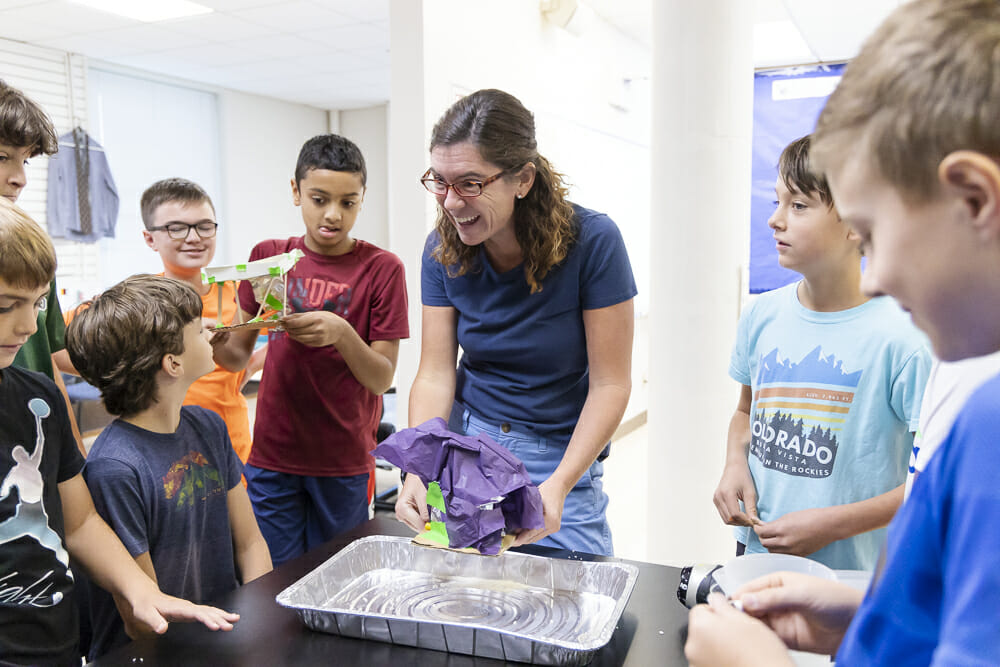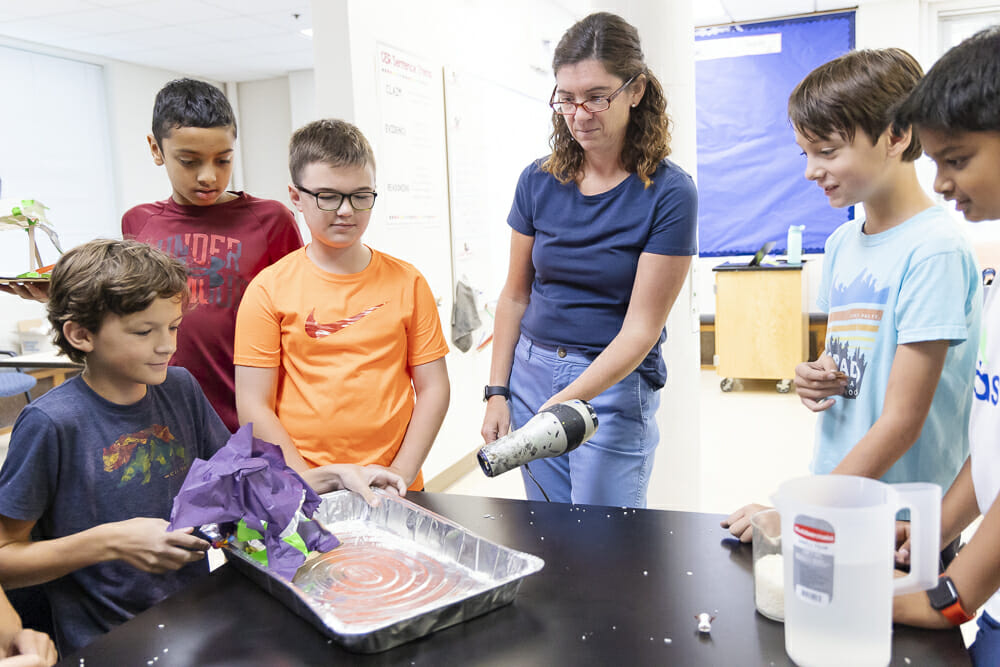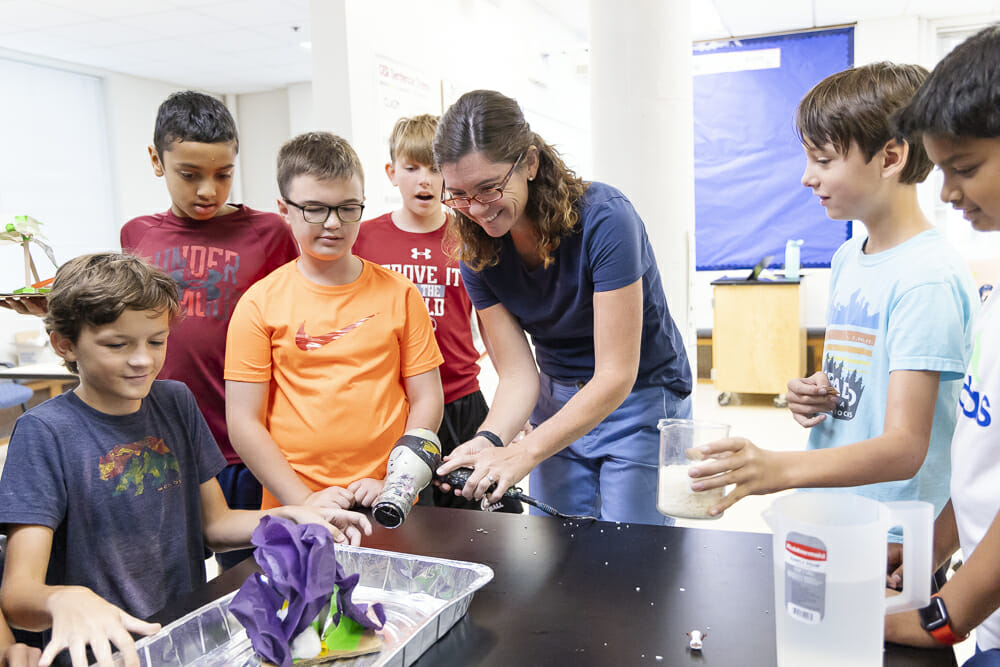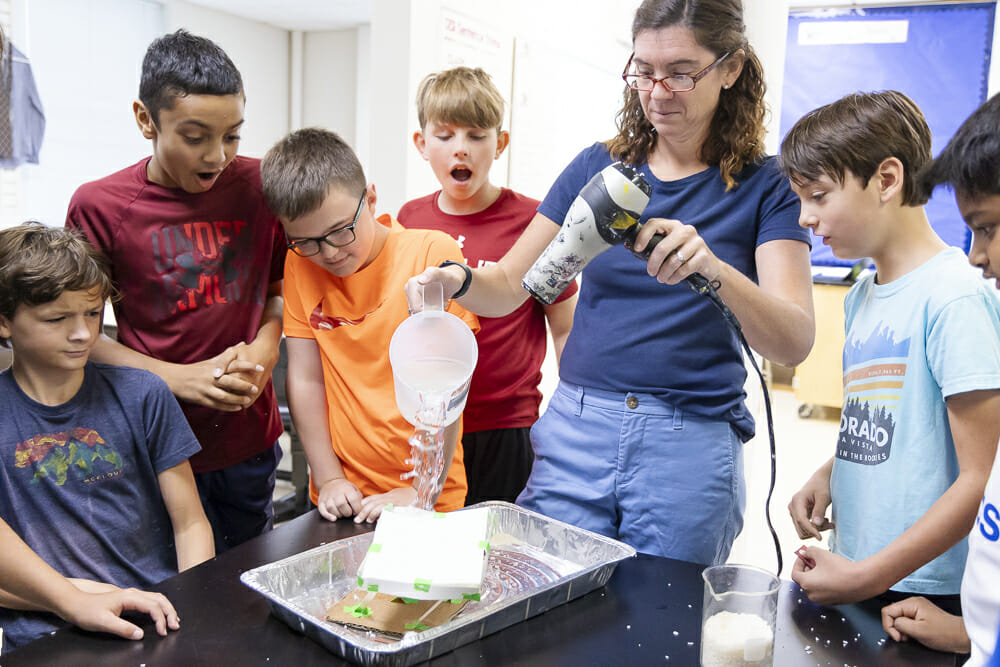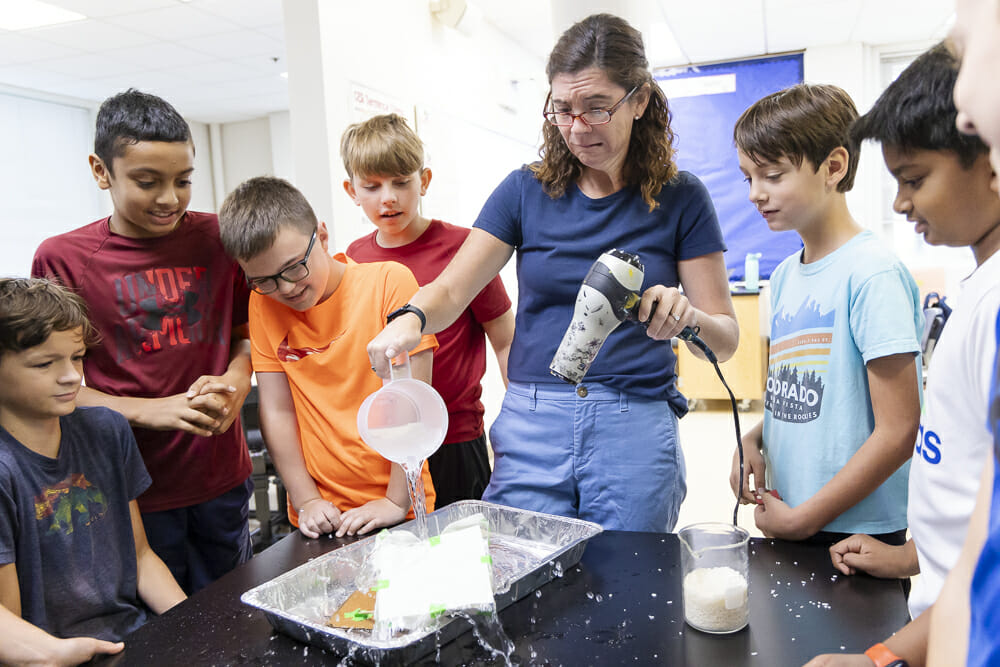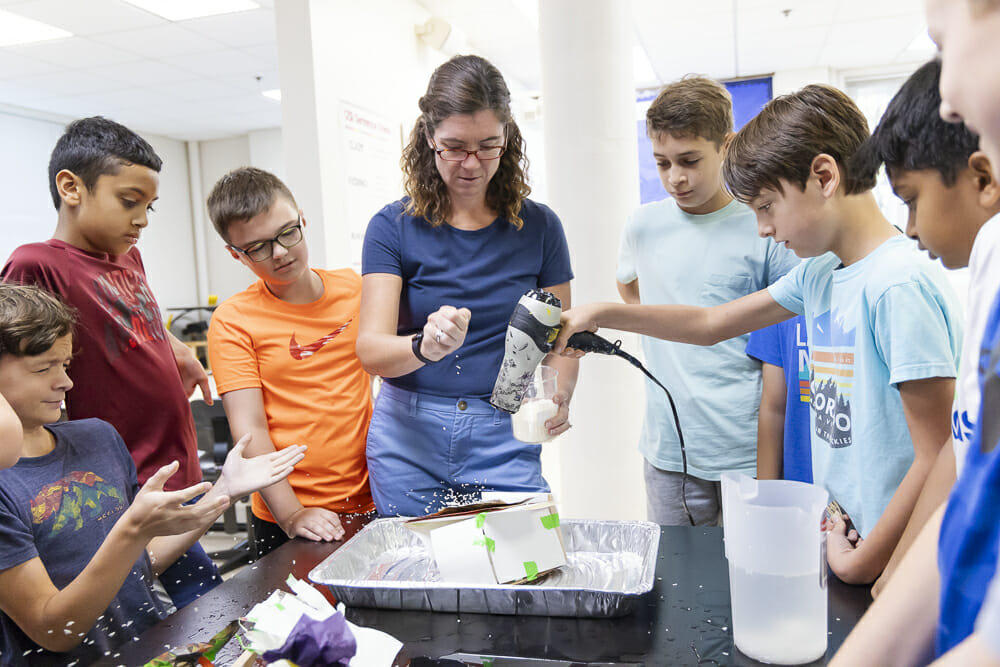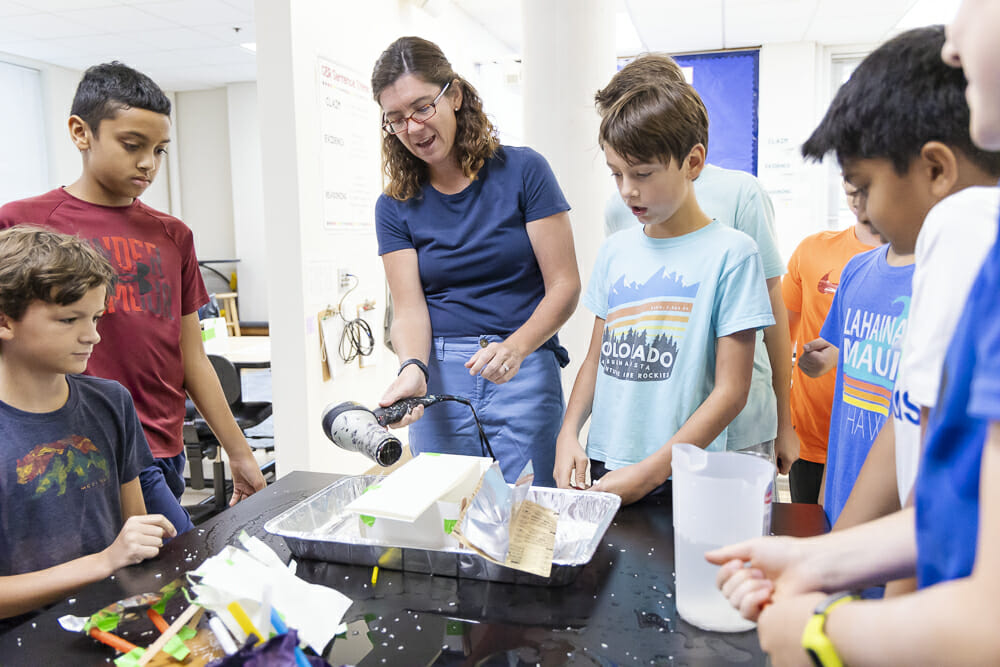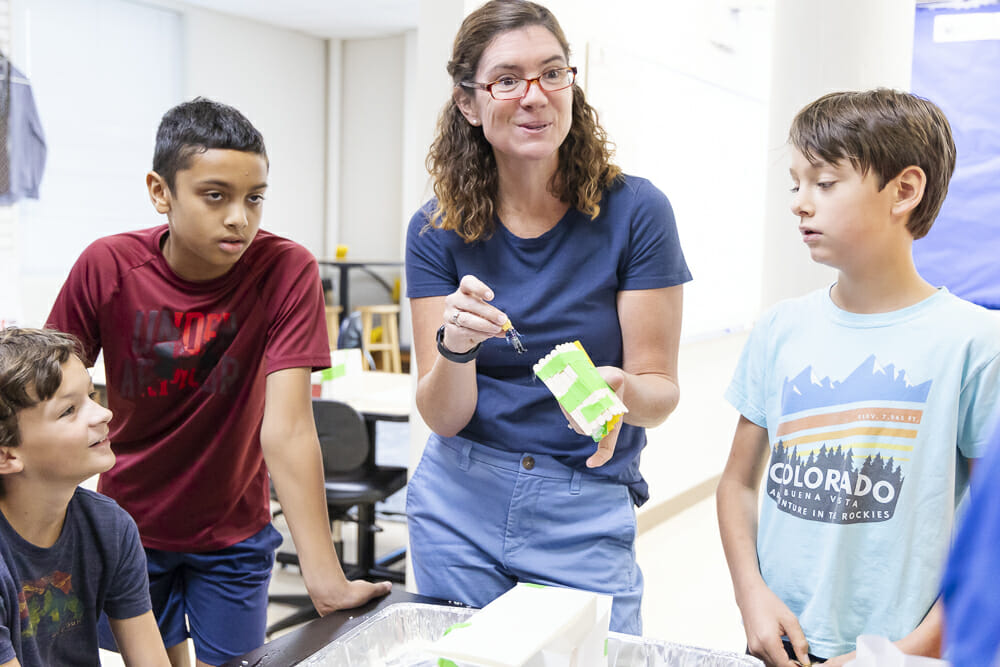Tornadoes and snow and rain…oh my! These wild weather scenarios are no match for our sixth grade science students, who tackled a STEM challenge to build a shelter using specific criteria and constraints. “We started Science 6 with an Intro Unit on how to think/process like a scientist and engineer, having them practice specific scientific engineering practices (SEPs): develop and use models, ask questions, communicate information, and analyze data,” said Middle School Science Teacher Callie Bambenek.
The students set to work on teams, designing, building, and testing a shelter that would protect people from at least two types of weather (sun, thunderstorms, snow, blizzards, hail, tornadoes, and hurricanes) and included a way for people to get in and out. (Items were placed inside the shelters for testing, so entry and egress were especially important!)
They could use only the materials provided and had only 30 minutes to build. Each shelter had to fit on a foundation whose dimensions did not exceed six inches by six inches. The shelters also had to be secured to the foundation without assistance from their designers.
After construction, each team sketched and labeled a diagram of their design and made notes regarding materials and construction methods used. They listed the weather/disaster types they tested their shelters against, and rated each with a success score (1 = not successful, 2 = somewhat successful, and 3 = very successful).
Careful analysis followed the testing. Students had to state what was successful about their designs, what they would change and why if they created another shelter, and what information might help them improve their designs. Finally, they compared their shelters against those of their classmates, determining what was the most effective design and why. They also looked for patterns to see what worked well and what did not, and what new material might be good to use for a future design.
Bambenek gleefully served as the Weather Conductor, pouring water and using a hair dryer to simulate storms, much to the delight of her students. What a fun way to incorporate some of the scientific principles they’ve been learning!
